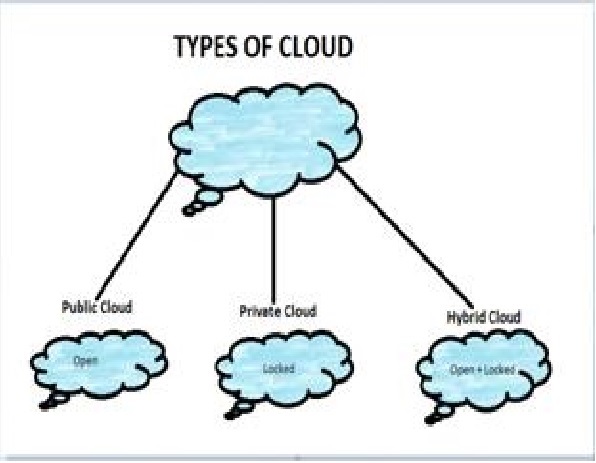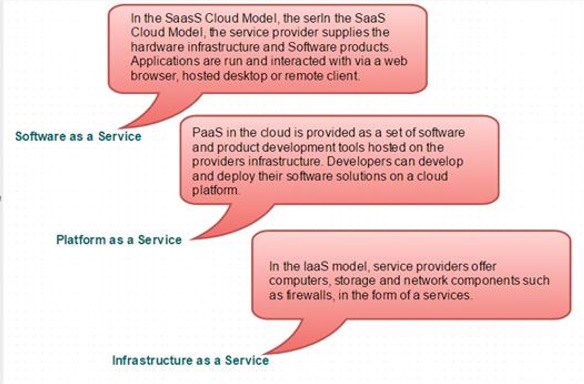Microsoft Azure - Windows
There are many cloud computing platforms offered by different organizations. Windows Azure is one of them, which is provided by Microsoft. Azure can be described as the managed data centers that are used to build, deploy, manage the applications and provide services through a global network. The services provided by Microsoft Azure are PaaS and IaaS. Many programming languages and frameworks are supported by it.
Azure as PaaS (Platform as a Service)
As the name suggests, a platform is provided to clients to develop and deploy software. The clients can focus on the application development rather than having to worry about hardware and infrastructure. It also takes care of most of the operating systems, servers and networking issues.
Pros
- The overall cost is low as the resources are allocated on demand and servers are automatically updated.
- It is less vulnerable as servers are automatically updated and being checked for all known security issues. The whole process is not visible to developer and thus does not pose a risk of data breach.
- Since new versions of development tools are tested by the Azure team, it becomes easy for developers to move on to new tools. This also helps the developers to meet the customer’s demand by quickly adapting to new versions.
Cons
- There are portability issues with using PaaS. There can be a different environment at Azure, thus the application might have to be adapted accordingly.
Azure as IaaS (Infrastructure as a Service)
It is a managed compute service that gives complete control of the operating systems and the application platform stack to the application developers. It lets the user to access, manage and monitor the data centers by themselves.
Pros
- This is ideal for the application where complete control is required. The virtual machine can be completely adapted to the requirements of the organization or business.
- IaaS facilitates very efficient design time portability. This means application can be migrated to Windows Azure without rework. All the application dependencies such as database can also be migrated to Azure.
- IaaS allows quick transition of services to clouds, which helps the vendors to offer services to their clients easily. This also helps the vendors to expand their business by selling the existing software or services in new markets.
Cons
- Since users are given complete control they are tempted to stick to a particular version for the dependencies of applications. It might become difficult for them to migrate the application to future versions.
- There are many factors which increases the cost of its operation. For example, higher server maintenance for patching and upgrading software.
- There are lots of security risks from unpatched servers. Some companies have welldefined processes for testing and updating on-premise servers for security vulnerabilities. These processes need to be extended to the cloud-hosted IaaS VMs to mitigate hacking risks.
- The unpatched servers pose a great security risk. Unlike PaaS, there is no provision of automatic server patching in IaaS. An unpatched server with sensitive information can be very vulnerable affecting the entire business of an organization.
- It is difficult to maintain legacy apps in Iaas. It can be stuck with the older version of the operating systems and application stacks. Thus, resulting in applications that are difficult to maintain and add new functionality over the period of time.
It becomes necessary to understand the pros and cons of both services in order to choose the right one according your requirements. In conclusion it can be said that, PaaS has definite economic advantages for operations over IaaS for commodity applications. In PaaS, the cost of operations breaks the business model. Whereas, IaaS gives complete control of the OS and application platform stack.
Azure Management Portal
Azure Management Portal is an interface to manage the services and infrastructure launched in 2012. All the services and applications are displayed in it and it lets the user manage them.
Getting started
A free trial account can be created on Azure management portal by visiting the following link - manage.windowsazure.com
The screen that pops up is as shown in the following image. The account can be created using our existing Gmail, Hotmail or Yahoo account.
Once logged in, you will be redirected to the following screen, where there is a list of services and applications on the left panel.
When you click on a category, its details are displayed on the screen. You can see the number of applications, virtual machine, mobile services and so on by clicking on the menu item.
The next chapter contains a detailed explanation of how to use this portal to manage Azure services.




